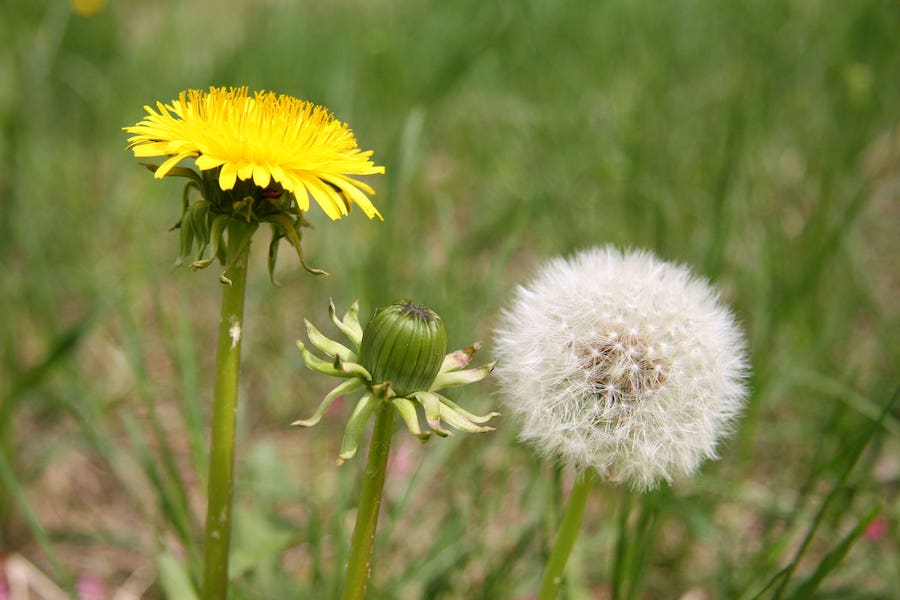Why you shouldn’t always dig up weeds
As insect numbers decline, weeds could be their lifeline, an expert tells Hannah Stephenson
When you’re digging up those annoying dandelions from your lawn, it might be worth sparing a thought for the insects they serve.
The UK’s insect population has fallen sharply, as invertebrates suffer in rising temperatures and fragmented habitats, and a recent study by conservation charities Buglife and the Kent Wildlife Trust found that the UK’s flying insect population has declined by up to 60% in the past 20 years.
Keeping some weeds in the garden will at least help their food sources, says Dr Anton Rosenfeld, research manager at the horticultural charity Garden Organic.
Read more:
- Pruning masterclass: How to prune roses, hydrangeas and apple trees
- How to grow a thick and healthy lawn
View this post on Instagram
“A lot of weeds have really good sources of pollen and nectar,” says Rosenfeld. “In fact, some of the worst offending weeds, such as ragwort, creeping thistle, spear thistles and dandelions, are the top nectar producers.”
Rosenfeld is currently leading a citizen science garden experiment, in which people are asked to survey weeds and report what types of insects they attract, and if weeds attract more insects. He believes they do.
“We need to take a different view of weeds. We have become too tidy, and there’s danger we are reducing biodiversity in our garden through use of herbicides, especially when people are expecting a lawn just to be grass. It becomes an ecological desert.”
Nectar is a source of energy and sugar for bees, while pollen provides protein – and dandelions come out at the top for producing pollen, he observes, offering the following advice…
Reconsider what is a weed
“Clovers in lawns, for example, are really important. Lawn fertiliser causes grass to dominate, but when you have slightly less fertiliser on the lawn, that favours the clover.”
View this post on Instagram
Top weeds
“The top nectar producers are common ragwort, creeping thistle, spear thistle, dandelion and flatweed, while the top pollen producers are dandelion, rosebay willowherb, corn marigold and flatweed.”
View this post on Instagram
Dandelions
“The dandelion is a superweed for insects, because it has such a long flowering period. It blooms early, when there isn’t much other food available for insects, and keeps on going well into autumn.”
View this post on Instagram
They are a valuable source of pollen and nectar from March to October, and attract 90 different species of bee, 62 species of hoverfly and 25 species of butterfly, he adds. Dandelions are the fourth highest nectar producers among plant species, and can be encouraged by reducing the amount of mowing you do.
Nettles
These are great for herbivorous insects and provide valuable habitat for red admiral, small tortoiseshell and peacock butterflies. The red admiral makes ‘tents’ out of the leaves and stems. Most are seen around June and July. Migratory species first appear in April but lay eggs, while the nettles provide food sources.
View this post on Instagram
Clovers
The clover bridges an important gap in late summer, he says, producing pollen and nectar when many other species have finished flowering.
“White clovers, which are considered weeds, are good for honeybees and bumblebees. There are other types of clover, such as red clover – which is actually pink in colour – which has slightly longer flowers and favours the bumblebees.

“Honeybees have shorter tongues, so are more selective about the types of flowers they choose. If you are sowing a lawn, you could put more interesting clovers in, such as a herbal ley mix. Crimson clover will give you a spectacular display of red flowers.”
Encourage clovers to flourish by setting the blade on your mower higher, and reducing the amount of fertiliser you put on the lawn, he suggests.
Cocksfoot grass
With three distinct tufty ears, this grass has traditionally been a lawn-lover’s bugbear, but it provides an important refuge for insects in summer and winter. Clump-forming and very drought tolerant, many species of butterflies will feed on the leaves and many bees, including the carder bee, like to nest in it.
View this post on Instagram
Ladybirds will also overwinter in it. Leave some un-mown clumps in your garden to help the insects, he advises.
Cow parsley
Often seen on country walks in hedgerows, cow parsley provides good early food for hoverflies. Umbellifers are generally good for attracting these short-tongued insects, and early flowering in May and June also makes it attractive to bees and parasitic wasps, he says.
“Any of the umbelliferous plants have an umbrella with a mass of floral units with short flowers. Hoverflies love any of the umbelliferous weeds and their grubs will eat the aphids on the plants.

What about really pernicious weeds?
“You have to be realistic. People don’t want couch grass taking over their garden, even though it might provide beneficial shelter for ladybirds. Bindweed is a good food for pollinators and looks nice in small doses, but you don’t want it everywhere. You have to strike a balance. We can be a bit more relaxed without it looking like chaos.”
The Press Association
Latest posts by The Press Association (see all)
- Francis the humble pope who won the hearts of millions - April 21, 2025
- Crunchy Chicken Caesar dip - April 17, 2025
- Could brisk walking boost your heart? - April 16, 2025
- Best spring-to-summer plants to fill the colour gaps - April 15, 2025
- Catherine tells how ‘spiritual’ connection with nature gives her peace in busy world - April 15, 2025




















